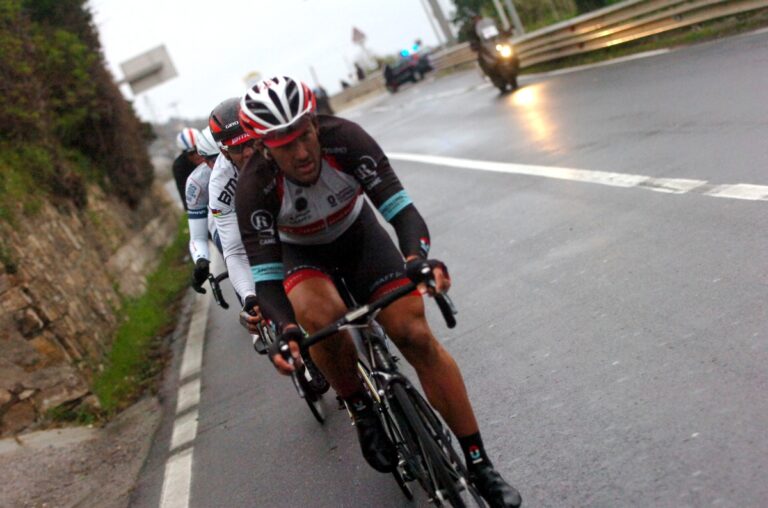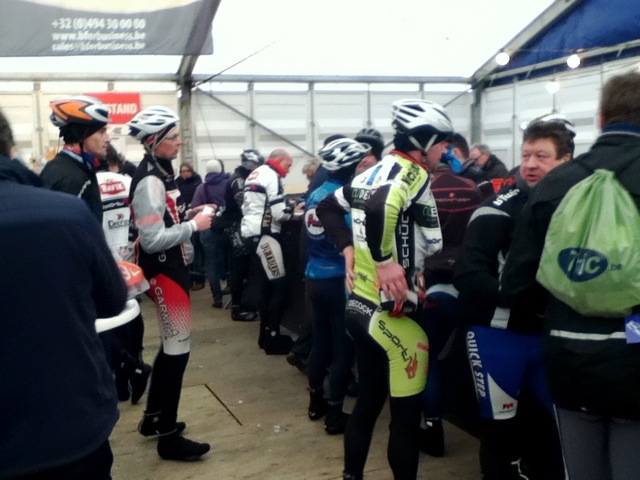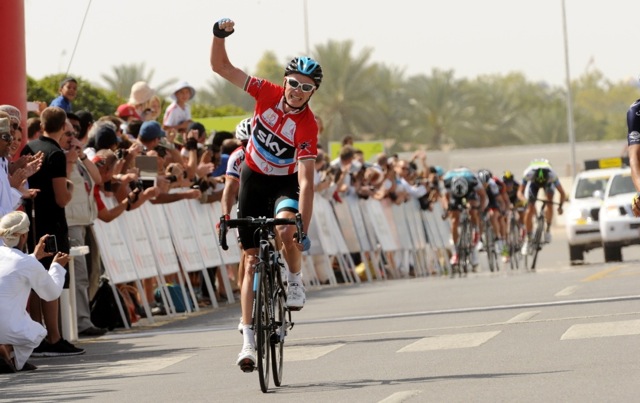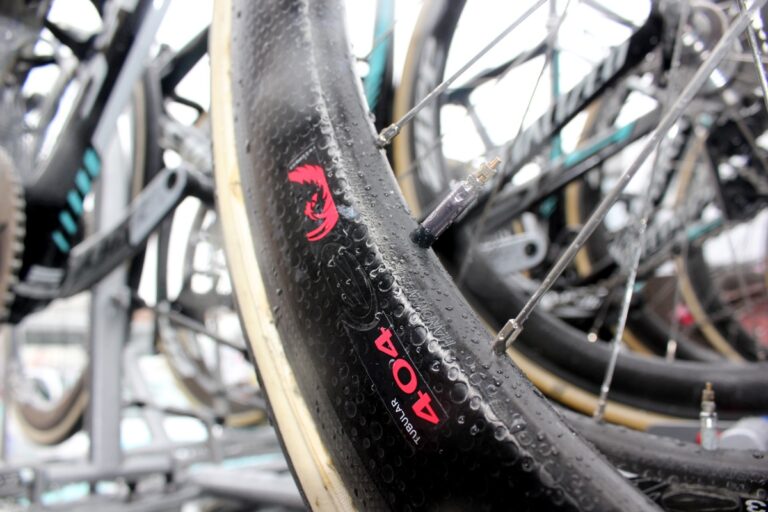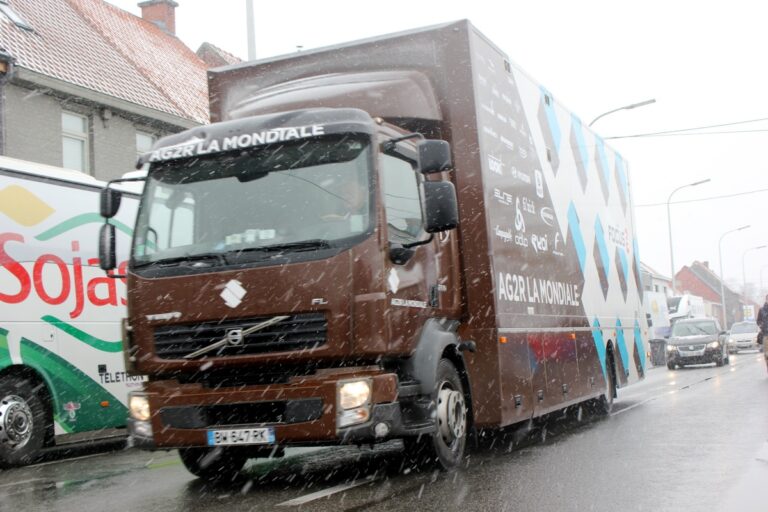A sensor on the car dashboard reports an outside temperature of one degree but this seems absurdly optimistic.

We’ve arrived in Belgium a day before the opening weekend of the European season, and the temperature is appropriate to a destination synonymous with exploits of attrition and bloody mindedness.
Omloop Het Niewsblad and Kuurne-Brussels-Kuurne lie ahead, but my thoughts are focussed solely on ways to stave off the biting temperatures in which we begin an impromptu ride from a petrol station car park in Bailleul: a short, 27.5km loop that will take in the Monteberg, Kemmelberg, Rodeberg, and the Mont Noir.
I scramble into cycling kit on the back seat of the car, frantically covering my exposed skin in as many layers as fall to hand. Others, taller and less able to enjoy the relative warmth of the car, brave the temperatures outside, recorded in the telling phrase, “minus zero”.
As four freezing Brits struggle into cycle clothing, pull bikes from the roof of the car and wheels from bags, passers-by look askance as they hurry across the windswept wasteland of the supermarket car park toward the relative warmth of the town.
Just minutes into the ride, I lose all sensation in my fingers. Negotiating the hazards of a foreign town, including zebra crossings at which motorists are not obliged to stop, provides only a minor distraction from the pain in my hands. Within minutes, however, after a few brisk kilometres of ‘through and off’, my core temperature has risen, blood has returned to my extremities, we are clear of the town and on our way to the Kemmelberg.
The opportunity to experience the theatres of combat in which elite competitors contest the great battles of sport is perhaps unique to cycling. Football fans will find opportunities for a kick about at Wembley in short supply. The Kemmelberg, steeped in cycling lore, silently awaits our arrival beyond the famed 90-degree left hander at the top of the Monteberg. A key battle site in WW1, and in editions of Gent-Wevelgem since, its cobbled surface rises above 20 per cent, and the riders’ second ascent of its short, brutish gradient is nearly always decisive in the first of the Northern Classics.
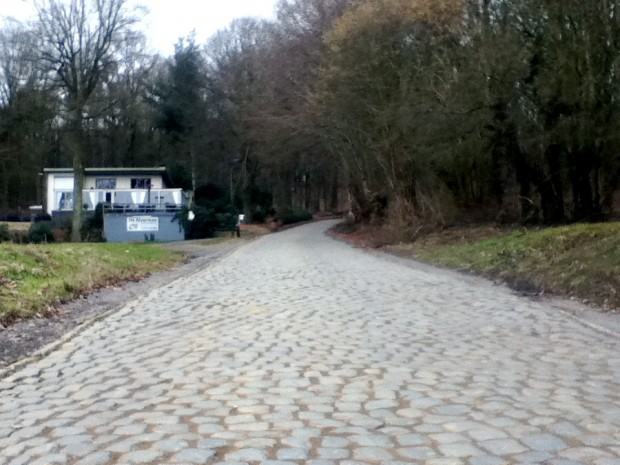
My progress up this legendary ramp is painful, but over too quickly. Taken in isolation, or, in my case, after about 12km and an ascent of the Monteberg, it’s easy to overlook its significance. Approached for the first of two ascents after 170km of racing, however, it must be impossible to ignore.
We are not racing, and have time to stop at the summit and admire the monuments to the fallen Allies of WW1. There is an inescapable sense of history here, social and sporting, and our brief pause is poignant.
There is little time for reflection on the descent, however. We choose to leave the summit via the straight, cobbled section, linked inextricably in the minds of many cycling fans with Jimmy Caspar’s horrendous crash in the 2007 Gent-Wevelgem. The race organisers now funnel the riders down an alternative route, a tarmaced path that skirts the side of the hill, but, determined to sample as much of the Kemmelberg’s significance as possible, we head down the cobbled descent.
Mercifully, we are riding in dry conditions. After just a few metres, my vision is blurred by the constant jarring of the cobbles, and when they give way to a smooth surface after less than a kilometre, I am filled with a sense of relief.
Our return to Bailleul takes us through a series of pretty towns and back across the border into France. The car park seems a little warmer now, and while we waste little time in returning the bikes to the roof, the wheels to their bags, and the kit to the boot, we are warmed by the sense of achievement and the certainty of having experienced something beyond the ordinary.
RoadCyclingUK traveled with Hammer Sports, organisers of the Hammer Sportive, and UK distributor for Thompson Bikes

